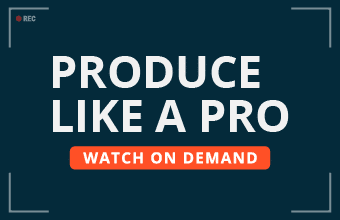Pinterest may not have as many monthly users as Instagram or Facebook, but it isn’t a social media platform that should be dismissed.
At last count, Pinterest attracts 250 million users, making it a prime target for small businesses to find new customers. And it’s not just young people posting and saving their ideas on the platform. It has a huge following among U.S. women between the ages of 25 and 54, and men are increasingly signing up for some inspiration, as well.
For small businesses, all of those users provide a great opportunity to win new customers and keep existing ones coming back. But in order to succeed on the platform, you have to understand how to use it for your business. Check out the following list of six tips to use Pinterest to advance your small business:
1. Understand the Inner Workings of Social Media
Social media platforms serve different purposes. For Twitter users, it’s all about getting their opinions across on everything from politics to sports. Facebook is about forging connections and catching up with people, while Instagram is photo-centered with brands using visual imagery to capture the attention of consumers.
Pinterest is a powerful social media platform because it’s where people come to get inspiration. They typically seek out specific ideas, whether it’s a new haircut or a wall design. They are interested in finding new ideas and products they may purchase or services they are considering. They aren’t turned off when brands’ pins show on in their feeds either. The market research firm eMarketer found that in 2017, Pinterest was only second to Facebook in terms of influencing consumers to make a purchasing decision.
What’s more, scores of Pinners (the nickname for Pinterest users) have made purchases after seeing a promoted pin on the platform. They will also check their saved Pins when shopping at physical stores. All of this means that you have an audience of consumers who are looking for ideas and products to purchase. Once you understand the power of this social media platform, you can formulate a strategy that works for your small business.
2. Set Up a Pinterest Account and Test the Waters
Before you start using Pinterest to reach new and existing customers, you need to set up an account and test the waters. The last thing you want is to launch a promotion that fails because you didn’t know what you were doing. When signing up for your business account, take the time to choose the category that best describes your business. Then, test the waters for a while. Check out what rivals are doing to get a sense of what works and what doesn’t.
Once you have an account, it’s time to create your profile. This can make or break your brand’s success on the platform. Make sure to select an image that sums up your business and reflects what you want the world to see. Include a link to your website and your location if you have a physical store. Make sure your website is tracking what people Pin by confirming the website during setup. It can also help your rankings in Pin search results. Also, add your logo on any Pins that come from your website. If you sell shoes and you Pin a pair that just came in, your logo will appear under it.
The allure of Pinterest is to get people to follow you and share your products and services. To enable that, you have to create boards on the platform. Your images, videos, and content should be engaging and organized so users want to come back. Each board should also have clear descriptions of its purpose.
3. Tailor Your Message to Your Business
If you make a product, the obvious way to use Pinterest is to promote it. People are looking for ideas and items to purchase and will welcome the promos. Make sure to put your product’s best face forward, pinning photos that feature different views, colors, and styles. Photos of customers using the products are also a plus.
In order to categorize the pin as a product, you need to add a price tag with a dollar sign. This enables the Pin to end up in the section of Pinterest where users can purchase items. Called buyable pins, any pin that has the blue price tag can be purchased on the spot or saved to a wish list.
4. Show Off Your Expertise with Blog Posts
Your business may not lend itself to product promotion, but Pinterest can still be a valuable tool. Companies are starting to Pin blogs, creating visual versions of their stories and musing. Users can click on it to visit the website and read the post, building name recognition along the way. Sharing a blog post requires you to use photos and images so that it appears correctly on Pinterest.
Pinterest can also be a venue to highlight customers and interesting content from others within your industry. You can create boards that showcase key employees, a group of customers or share compelling research. Use eye-catching imagery and graphics to draw the reader in and provide links to several pieces of content. The more you keep them on your board or website, the better it is for your business.
5. Optimize Your Boards for Search
You can create the best board in the world but if nobody knows about it, it won’t matter. In order to get the most out of your Pinterest efforts, create boards that are keyword-friendly. When users search Pinterest, you want your board to show up in the results.
After coming up with a list of topics you want to cover with your boards, identify the keywords most often used to search those products, services or themes. Embed the words in your profile and all of the text you use on Pinterest. That will help consumers discover your brand in Pinterest, as well as in Google searches. Make sure the keywords are in your profile name, description, and boards.
6. Analyze Your Campaigns
The last thing you want to do is waste time on Pinterest, so it’s important to gauge how your efforts are doing. You want to know if your pins are resonating and if people are saving and re-pinning your content. You also want to know if it’s resulting in new followers, which is the aim of most small businesses.
Such analyzation can also provide information on what your followers care about and what their interests are. All of that can be used to help come up with ideas for future boards.
Final Thoughts
Social media can seem daunting with so many options to choose from, but Pinterest is ideally suited to help you grow your small business. Users on Pinterest are looking for ideas and welcome suggestions from brands. In order to reach your potential on this social media venue, you have to create compelling and visual pins that engage consumers and keep them coming back for more inspiration. If you can do that and stay on top of how your efforts are faring, you will be well on your way to Pinterest marketing success.
Do you use Pinterest for your small business? What strategies have worked best for you?







